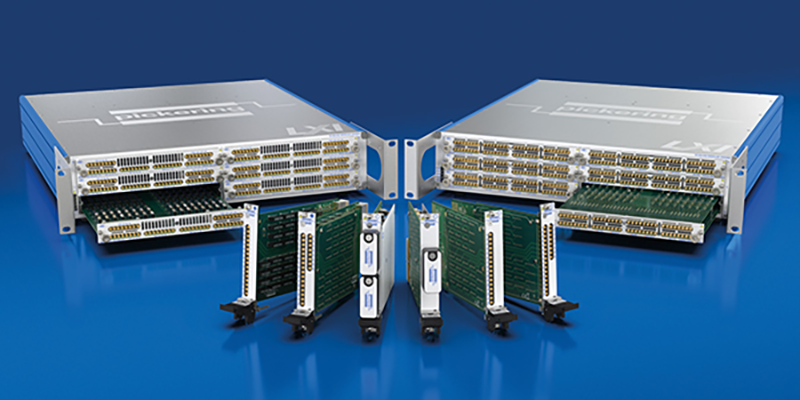Automated Test Equipment: Declaring Hardware Independence
Advanced ATE software platforms accommodate hardware changes with minimal reprogramming. These “hardware-independent” solutions simplify the development of complex test procedures to ensure the longevity and functionality of ATE stations.
Automated Test Equipment (ATE) and Automated Test Systems (ATS) ensure that electronic devices operate according to specifications in the field, thereby averting the introduction of flawed products to the market.
For this reason, the aerospace and defense sectors make substantial investments in ATE due to the criticality of lifesaving electronics utilized in military equipment such as aircraft, naval vessels, and ground vehicles, as well as in various systems like weapons, radar, and wireless communication.
ATS is also widely utilized for testing automotive electronics, batteries, and electronic drive systems in the EV market. ATEs are also used to optimize the performance of telecom infrastructure, analyze and improve the efficiency of renewable energy systems, and validate consumer electronics.
Unfortunately, the one constant in Automated Test Equipment (ATE) is changing. Over time, the system’s hardware components deteriorate or become outdated. Alterations in the test project and changes in scope parameters ensue. Government contracts may not be renewed or could be entirely terminated. Test specifications undergo modifications, sometimes necessitating a complete reconfiguration of the test.
To implement such changes in most systems, extensive reprogramming of the test software is required, often at a substantial cost. Frequently, Test Engineers, who are in growing demand, must handle the implementation of the programming code.
To address this issue, many engineers are advocating for “hardware independence,” which, in a nutshell, involves the adoption of flexible test program software that streamlines and adapts to inevitable changes without extensive new programming. These hardware-independent solutions simplify the programming of complex test procedures by using fill-in-the-blank test routines to slash development time dramatically.
This strategy frees engineers from the constraints of a single equipment brand, granting them the flexibility to select cost-effective or specialized equipment. ATE stations can be modified or repurposed, significantly reducing equipment maintenance costs over time.
“Hardware independence is important for several reasons. Although the test equipment hardware requires a significant investment of hundreds of thousands to 3-4 million dollars or more, the writing of test programs costs multitudes more,” says Andrew Engler of Intepro Systems. Founded in 1981, Intepro has supplied Automated Test Equipment (ATE) systems that test power electronics in various applications.
“With more flexible software, ATE stations can essentially be ‘future-proofed’ to ensure that as hardware requirements change and evolve, the test programs can adapt accordingly to ensure long-term usability,” adds Engler.
Although ATE systems can be used for different tests, Engler says Intepro specializes in power electronic testing, including power converters, inverters, chargers, batteries, adapters, and other power components.
ATE stations are specifically engineered to produce and disperse substantial energy for this type of testing to validate the functionality of the units being tested.
“A typical automated test solution consists of hardware, software, test instruments, signal sources, test harnesses, probes or handlers,” explains Engler. “However, not all automated test solutions use the same components. The configurations vary widely depending on the device the customer tests and the parameters requiring measurement.”
The hardware components are typically consolidated into all-in-one test stations, which vary in size and portability from compact test stations on wheels to large stationary test towers. Each system also includes test program software, which plays a critical role in test development and the management of data collection, storage, reporting, and analysis.
Engler describes the software as the “heart” of the ATE station. However, the software must be reprogrammed when the test parameters change or the hardware needs to be replaced.
“Many of our customers are project-based,” explains Engler. “So, if they are involved in aerospace testing and have a multi-year project that gets reassigned, now the test station they have has to change. They can either throw it all away, or they can refurbish it and adapt it to the requirements of a new program,” says Engler, adding that if the test requirements change dramatically, entire stations can end up as “500 lb. paperweights collecting dust in a test lab.”
Engler says this contradicts ATE’s core objective, which is to automate and streamline repetitive testing to save time, reduce errors, and provide a repeatable process.
“Even if you are an expert C+ or Python programmer, it will take you a lot of time to get through lines and lines of code. We simplify that process and cut the development time in half or more,” adds Engler.
That is why companies like Intepro have developed hardware-independent test software with simplified drag-and-drop test routines designed to dramatically reduce the development of test programs.
Intepro’s offering, PowerStar, provides hundreds of fill-in-the-blank test routines that provide a range of control, from single instrument functional control to full test procedures with easy-to-use parameter entries. Engineers can customize their programs without writing code or assembling graphical components.
“[PowerStar] can seamlessly integrate various hardware configurations and platforms. Even if there is already an incumbent software, our solution can be implemented and call on the other software when applicable,” says Engler.
The ability to interchange hardware without significant software reprogramming offers substantial advantages to sectors bound by stringent regulations and federally mandated approvals, including aerospace, defense, and medical equipment manufacturing. Once test programs and procedures are established and approved, obtaining a re-approval after programming changes can be expensive. Tools such as PowerStar enable engineers to document their progress, decreasing the time required to certify test programs.
Even without explicit regulations, companies manufacturing products for critical applications may be legally liable if the product malfunctions. This underscores the hidden costs associated with inadequate testing.
Today, more advanced software options can deliver unprecedented flexibility for ATE engineers and operators, simplifying intricate testing procedures and saving time and resources. This only strengthens the potential of automated testing as a valuable data acquisition and diagnostic tool for testing electronics across industries like defense, aerospace, automotive, and industrial automation.

